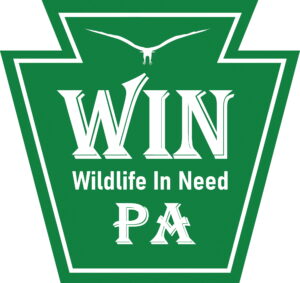About Wildlife Rehabilitation
Wildlife rehabilitation is a network of individuals and organizations
caring for injured, sick and orphaned wild animals with the goal of
releasing these animals back into their natural habitat.
Wildlife rehabilitators have demonstrated a proficient knowledge of
wildlife by passing both written and oral examinations, have met
certain housing standards for species they are permitted to treat,
attend continuing education classes and work with a licensed
veterinarian.
Through rehabilitation, an animal is given the benefits of proper
nutrition and husbandry as well as modern medical care including
fluid and drug therapy, diagnostics, x-ray and surgery. For
animals that cannot survive in the wild, or who are beyond the
ability to recover, rehabilitation offers a painless end to their suffering.
Individuals who unlawfully possess wildlife not only endanger the
health and well-being of that animal, but also are risking their own
health, as well as the health of their family and pets. In addition
to the physical injury a wild animal can inflict, wildlife carry
diseases and parasites that can infect humans and domestic animals.
Furthermore, animals that have been humanized pose a great threat to
the people they encounter as well as to themselves.
By offering an alternative, wildlife rehabilitation is also a public
service which provides the public with a humane, legal way of dealing
with the wildlife in need that they encounter. The person who finds
and rescues a wild animal is the first step in the process of
returning an animal to its natural habitat, as well as in protecting
the public health. From the moment you pick up an animal in distress,
you become part of that network of individuals whose purpose is
giving that animal a second chance at life.
From "Rescuing Wildlife:
A Guide to Helping Injured and Orphaned Animals"
by permission of author
More Information
Wildlife rehabilitation is a system of caring for injured, sick, and
orphaned wild animals with the goal of releasing these animals back
into their natural habitat.
Wildlife rehabilitation is also a public service, providing the
public with a humane, legal way of dealing with wildlife in need that
they encounter.
What Does A Rehabilitator Do?
Most of the time is spent feeding animals and cleaning their cages.
Orphaned Wildlife: Orphaned baby birds need constant
feeding and cleaning throughout the day. Baby mammals need to be fed
every few hours around the clock. Special attention is given to
monitoring their growth, feeding and nutritional requirements,
temperature, and humidity. All of this must be done with minimal
handling so the animal doesn’t become attached to people, remembering
that the ultimate goal is releasing that animal back to the wild.
Injured and Sick Wildlife: Rehabilitators work closely
with the veterinarians in diagnosing injury and illness and
developing a program of intensive care, medication, feeding,
exercise, physical therapy, and pre-release conditioning tailored for
the animal.
Public Education: One of the most important tasks as a
Rehabilitator is educating the people who call you for information or help.
Many people find animals and immediately assume the animal is in trouble.
The Rehabilitator listens carefully and asks questions to determine
if that animal is truly in need. If it is not, it is the
Rehabilitator who instructs the person how to put the animal back and
why it is important to do so. If the animal does need help, the
Rehabilitator instructs the finder on how to properly contain and
transport the animal to him/her..
Public Outreach: Many Rehabilitators give programs to schools
and other organizations to educate the public.
"There
can be no purpose more inspiriting than to begin the age of
restoration, reweaving the wondrous diversity of life that still
surrounds us."
~~Edward O. Wilson




